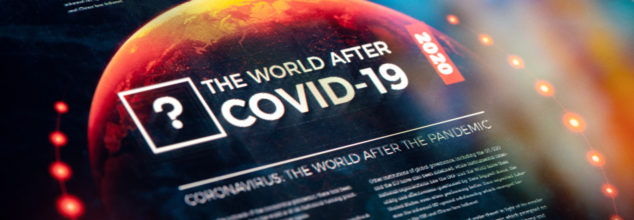- Health Conditions A-Z
- Health & Wellness
- Nutrition
- Fitness
- Health News
- Ayurveda
- Videos
- Medicine A-Z
- Parenting
- Web Stories
10 Things About The New COVID-19 Vaccine Plan By Trump Administration

Credits: Canva
With the world continuing to inch away from the height of the COVID-19 pandemic, a fresh wave of infections is again causing concern—this time fueled by new subvariants of the Omicron variant. Southeast Asia, more so urban areas in Singapore, Hong Kong, and sections of India, is experiencing a rise in COVID-19 infections propelled by the JN.1 variant and its sub-lineages LF.7 and NB.1.8 but is it a new pandemic in the making?
Most recent data from Southeast Asian health ministries reveal a sudden surge in cases of Covid-19 in Hong Kong, Singapore, China, and Thailand. In Singapore, the Ministry of Health's rare update—its first since nearly a year ago—recorded a 28% jump in weekly cases to 14,200 for the week to May 3. The daily hospital admissions have also increased about 30%.
The present surge in COVID-19 cases is being majorly spurred by new Omicron subvariants, most notably JN.1. That variant and its offspring LF.7 and NB.1.8, are being found highly contagious.
The World Health Organization (WHO) has classified JN.1 as a "variant of interest," subsequently promoting it to a "variant of concern." Nevertheless, world health authorities continue to assert that the public health risk is low at this point.
In a significant shift to America’s COVID-19 response strategy, the Trump administration has unveiled a new vaccine plan that narrows access to updated COVID-19 shots. Moving away from broad eligibility, the revised guidelines prioritize high-risk populations—particularly adults over 65 and individuals with underlying health conditions—while delaying vaccine access for millions of others pending further clinical trial data. This marks a pivotal moment in public health policy, reflecting growing debates within the scientific community about the necessity and effectiveness of repeated COVID-19 vaccinations for low-risk individuals. Here's what the global audience needs to know about the updated strategy.
The Trump administration has introduced a new strategy for the upcoming COVID-19 vaccine rollout that significantly shifts who gets vaccinated and how. While the public health community remains divided, the FDA is taking a more conservative approach to repeated dosing, citing insufficient data for low-risk individuals. This article breaks down the 10 most critical aspects of the new plan and what they mean for Americans heading into fall.
1. Fewer Americans Will Have Immediate Access to Updated COVID-19 Vaccines
Unlike previous years, the new plan scales back widespread eligibility. Only adults aged 65 and older, and individuals of any age with one or more risk factors, will be immediately eligible for updated COVID-19 vaccines this fall. Younger, healthy adults will need to wait for additional clinical trial data before receiving their shots.
2. A Broader and More Inclusive Definition of ‘High Risk’
The CDC and FDA define “high risk” in wide-ranging terms. This includes individuals with obesity (as determined by BMI), diabetes, heart disease, cancer, pregnancy, and even mental health conditions such as depression. This means that as many as 100 to 200 million Americans could still qualify for the vaccines under this revised definition.
3. Healthy, Low-Risk Americans Will Need More Proof of Benefit
One of the key changes is the requirement for more robust data before low-risk individuals can receive additional vaccine doses. According to FDA officials, this group—which includes people under 65 with no pre-existing conditions—will need randomized, controlled trial data to support vaccine approval. This marks a significant departure from the blanket vaccine eligibility seen during the earlier phases of the pandemic.
4. Scientific Uncertainty Over Repeated Doses Is a Driving Factor
In a joint article published Tuesday, FDA Commissioner Marty Makary and vaccine chief Vinay Prasad questioned the clinical benefit of continued booster shots for those with prior COVID-19 infections and multiple vaccinations. They cited a lack of clear benefit for individuals like a “healthy 52-year-old woman with a normal BMI” who has already had COVID-19 three times and received six doses.
5. Data Gaps and Low Uptake Have Pushed the Shift in Policy
Officials point to low public uptake of recent vaccine updates as a sign that both the public and many healthcare providers are skeptical. They emphasize that more rigorous scientific evidence is needed to justify continued mass vaccination, especially in populations that are already well-protected through prior infection or vaccination.
6. Vaccine Trials for Low-Risk Groups May Take Time
The FDA's requirement for additional trials raises the question: Can pharmaceutical companies conduct these studies in time for the fall rollout? Officials admit that it's unclear whether these trials can be completed quickly enough, especially since they would need to measure real-world outcomes against emerging variants.
7. Not All Years Will Require New Trials
Vinay Prasad noted that these rigorous trials won’t necessarily be required annually. Instead, they will likely be triggered when there is a substantial shift in the dominant circulating COVID-19 strain. This nuance allows for flexibility while maintaining scientific credibility.
8. Outside Experts Will Soon Vote on the Target Strain for New Shots
This Thursday, independent vaccine advisers will meet to determine which strain should be used for this year’s updated vaccines. Their recommendation will inform manufacturing and public health guidance. However, the real pivot will happen in June, when the CDC’s vaccine advisory panel votes on whether to adopt the FDA’s new framework.
9. CDC Approval Will Be the Final Step Before Implementation
Once the CDC panel votes, the recommendations will still require a final sign-off from the CDC Director. If approved, these guidelines will also influence which vaccines are covered by insurance, effectively determining public access and affordability.
10. The New Plan Balances Science With Regulatory Responsibility
At its core, the Trump administration’s revised plan is about aligning public health recommendations with high-quality scientific evidence. While this cautious approach could limit vaccine access in the short term, officials argue it strengthens trust and transparency around COVID-19 vaccination. As stated in the policy, this is about balancing “regulatory flexibility” with a “commitment to gold-standard science.”
This fall marks a new chapter in the U.S. COVID-19 response, one that veers away from blanket recommendations and toward a more targeted, risk-based approach. The Trump administration, through FDA and CDC coordination, is aiming to restore scientific rigor while also acknowledging public fatigue and skepticism.
RFK's ‘Make America Healthy Again’ Report Fuels Political Rift Before Release

Credits: AP Photo and Canva
A forthcoming White House report on childhood diseases is stirring political tension, with farmers and several Republican lawmakers raising concerns about its potential impact on agriculture. The report, part of the “Make America Healthy Again” (MAHA) initiative led by Health Secretary Robert F. Kennedy Jr., is expected to be released Thursday and has already drawn criticism before its release.
A Promised Review Sparks Political Divide
President Donald Trump had pledged a 100-day review to investigate the impact of American lifestyle factors—including school lunches, medications, and food safety—on rising childhood health issues such as obesity, depression, and ADHD. The report, prepared by the MAHA Commission, is set to address these concerns. However, many in the farming community fear it could target glyphosate, a key pesticide ingredient used for decades.
On Wednesday, Iowa Senator Chuck Grassley voiced concern on the Senate floor, stating that farmers are frustrated about being left out of the report’s development. “I hope there is nothing in the MAHA report that jeopardizes the food supply or the livelihood of farmers,” Grassley said.
Tensions Over Glyphosate
Glyphosate has long been considered essential by many farmers for weed control and soil preservation. Blake Hurst, a Missouri farmer and former president of the Missouri Farm Bureau, emphasized, “There’s a reason why we still use it: It works.”
Kennedy has denied that the report unfairly targets agriculture. “There’s not a single word in [the report] that should worry the American farmer,” he said during a Senate Appropriations Committee hearing.
Still, his past legal battles against glyphosate producers and support from anti-pesticide advocates have only intensified skepticism. A letter signed by 360 MAHA supporters—including farmers and former campaign staffers—called on the commission to hold the chemical industry accountable, citing growing evidence of health risks.
Internal and External Pressures
Dave Murphy, a former fundraiser for Kennedy’s presidential bid, claimed he submitted research on pesticides to the Trump administration for inclusion in the report. He also noted mounting political pressure around the final language of the document.
The MAHA Commission was established by executive order in February, with members including Kennedy, FDA Commissioner Marty Makary, Agriculture Secretary Brooke Rollins, and NIH Director Jay Bhattacharya. Despite promises of “radical transparency,” no public meetings have been held, and only brief clips from a closed-door session in March have been released.
The White House has not commented on the report’s contents or its timeline for release, as reported by the Associated Press. The proposed federal budget includes a $500 million increase for the MAHA initiative, while also cutting funding for programs related to infectious disease prevention, maternal health, and medical research.
As the release approaches, debate continues over whether the MAHA report will prioritize children's health without sacrificing the interests of American agriculture.
Does A Better Alternative to Covid-19 Vaccine Exist? Here's What You Need To Know

Credits: Canva
The world is again gearing up as COVID-19 returns in many Asian cities, including Hong Kong, Singapore, and Thailand. Cases have also been reported in India. If experts are to be believed, it is the vaccines that have played a major role in prevention of the disease, especially during the peak time of the COVID-19 pandemic that started in December 2019.
While vaccines are a great way to protect oneself against something as contagious as COVID-19 virus, there could be another promising alternative to the traditional jabs. Scientists say that it could be more effective, safer, and better at stopping the virus.
The researchers from Yale University have found the nasal vaccine boosters could be safer to use and help target better protection against the respiratory diseases like COVID-19.
What Do The Findings Suggest?
The study is published in the journal Nature Immunology, which notes that while most vaccines and boosters get administered as injections direct in one's muscle tissues, protection from respiratory diseases like COVID-19 could be crucial through nasal shots.
As per the scientists, nasal vaccine boosters trigger strong immune defences directly in the respiratory tract. This happens even when the immune-boosting ingredients known as adjuvants are not available. "Our study shows how a simple viral protein antigen can boost respiratory tract immune responses against virus," said Dr Akiko Iwasaki, Sterling Professor of Immunobiology at Yale School of Medicine and senior author of the study.
“These data imply that viral proteins in nasal spray may be used as a safe way to promote antiviral immunity at the site of viral entry,” he added.
How Was The Study Conducted?
Scientists have explored a new vaccine strategy aimed at strengthening immunity against respiratory viruses like COVID-19. In their study, mice were first given a traditional mRNA COVID-19 vaccine through an injection in the muscle. Later, the same mice received a booster dose through the nose. The goal was to examine how booster shots—especially those using adjuvants (ingredients added to enhance immune response)—influence the body’s defense mechanisms. While adjuvants can make vaccines more effective, they also carry risks like inflammation and nerve swelling.
“We call this vaccine strategy ‘prime and spike,’” explained Dong-il Kwon, a postdoctoral fellow in Yale’s Department of Immunobiology. “The mice were first primed with an mRNA vaccine in the muscle and then given a nasal booster without any adjuvants.”
Interestingly, only the nasal booster led to a strong localized immune response. Unlike intramuscular shots, the nasal spray significantly increased levels of IgA—a type of antibody crucial for protecting mucosal surfaces such as the nose and lungs. These areas are typically the first to be attacked by respiratory viruses. When a second nasal booster was administered, IgA levels rose even higher, suggesting a compounding effect.
“These findings help explain why nasal boosters don’t need adjuvants to trigger strong mucosal immunity and offer a safer way to design vaccines against respiratory viruses,” Kwon noted.
Current COVID-19 vaccines do not generate much IgA in the respiratory tract, which may explain why vaccinated people can still get infected and transmit the virus. This study suggests that nasal boosters could be a powerful tool in offering more complete and long-lasting protection where it's most needed.
Previously too, in the journal Science Advance, scientists noted that nasal vaccinations for respiratory diseases including COVID-19 could be far more effective. The previous study was based on an experiment conducted on hamsters, where the nasal vaccine was able to stop the transmission.
Measles Scare At Shakira Concert: Can Infection Spread Through Touch?

Recently Shakira, pop icon, set the stage ablaze at MetLife Stadium on May 15 during her Los Mujeres Ya No Lloran World Tour and the 82,500-seat arena pulsed with energy, light, and fans from all over the country. But within days, a New Jersey health agency warning has cast a foreboding shadow over the night's celebrations.
A concert attendee, recently diagnosed with measles, could have infected thousands of others who gathered in the packed stadium—prompting key questions about public health, immunization, and how measles is spread in close quarters. The question that's now echoing far beyond the stadium entrances: Can measles actually spread by touch?
As per the New Jersey Department of Health, the infected person—a non-state visitor—was at the concert from 7:30 p.m. to 1 a.m. Nobody knows where inside the stadium the person was sitting or how many were directly around them. However, the contagious nature of the measles virus is such that physical proximity is not always required for infection.
Health officials called for an alert telling concertgoers to watch for symptoms and to steer clear of direct trips to health facilities unless they are absolutely necessary, in an effort to avoid spreading more exposure. Instead, they suggested calling healthcare providers first so special precautions can be made.
Can Measles Spread Through Touch?
Measles, or rubeola, is one of the most contagious viruses that have ever been known by science. It is spread mostly by respiratory droplets when an infected individual coughs or sneezes. But wait, there's more. According to the Centers for Disease Control and Prevention (CDC), the virus remains suspended in the air for as long as two hours after an infected individual has vacated the area—and it can also be deposited on surfaces. So to answer your question, yes, measles can spread by touching.
If an individual touches an infected surface—such as a handrail, seat armrest, or bathroom door—and then also touch their eyes, nose, or mouth, they risk infection. This is particularly worrying in places such as concert halls, where tens of thousands of individuals touch communal surfaces within a short period of time.
Perhaps most disturbing is how sneaky the measles virus is. A person infected with the virus can begin to spread the virus four days before the characteristic rash shows up—and continue to spread it for four days afterward. That leaves many people who spread the disease not knowing they are ill, which makes public health responses in crowded events more difficult.
Symptoms may take 7 to 14 days to develop, which is why health officials are calling for alertness at least until June 6. Early measles symptoms mimic the flu: high fever, dry cough, runny nose, and watery, red eyes. The telltale rash—flat red spots beginning at the hairline and spreading downward—may follow later, after the virus has already been spread to others.
Why the Measles Outbreak in 2025 Is Alarming?
The Shakira concert incident isn’t an isolated case. The U.S. is in the midst of its worst measles outbreak in three decades. As of mid-May 2025, the CDC has reported 1,024 cases across 31 states—more than triple the total number of cases in all of 2024. Fourteen distinct outbreaks have been recorded so far this year, and a staggering 92% of cases are connected to these outbreaks. Three people have died.
There are several reasons why a disease believed to be almost eradicated in the U.S. is making a comeback. Among them are decreased vaccination coverage, false information on vaccine safety, and lack of global immunization due to compromised access to healthcare during the COVID-19 crisis.
Who's Most at Risk?
Though measles may infect anyone who is not immune, there are some groups that are particularly susceptible. Those who are too young to be vaccinated with MMR (measles, mumps, and rubella) are at risk, as well as those with weakened immune systems or certain medical conditions that make it impossible for them to be vaccinated. Those who have not been given both doses of the MMR vaccine or who never caught measles are also at greater risk.
The CDC estimates that as many as 90% of non-immune contacts of a patient with measles will become infected.
As of Tuesday, there were no other confirmed cases related to the concert. Nevertheless, health officials are warning anyone who went to the concert and starts showing signs to stay out of public areas and reach out to a healthcare provider right away.
The outbreak has stimulated renewed calls for vaccination and awareness. "This is not an individual health matter but a public health threat," said one CDC official. "Vaccination is our strongest protection, and all who can be vaccinated should be.
The irony isn't lost on many: what was meant to be a unifying event for people around the country might now stand as a national reminder of the residual potency of contagious disease—and the value of public health vigilance.
While Shakira's tunes will ring on in the ears of fans, the possible health effect of the night might resonate much further. As the tale is told, it is a wake-up call and also a chance to reiterate the value of vaccination, early diagnosis, and safe conduct during possible epidemics.
© 2024 Bennett, Coleman & Company Limited

